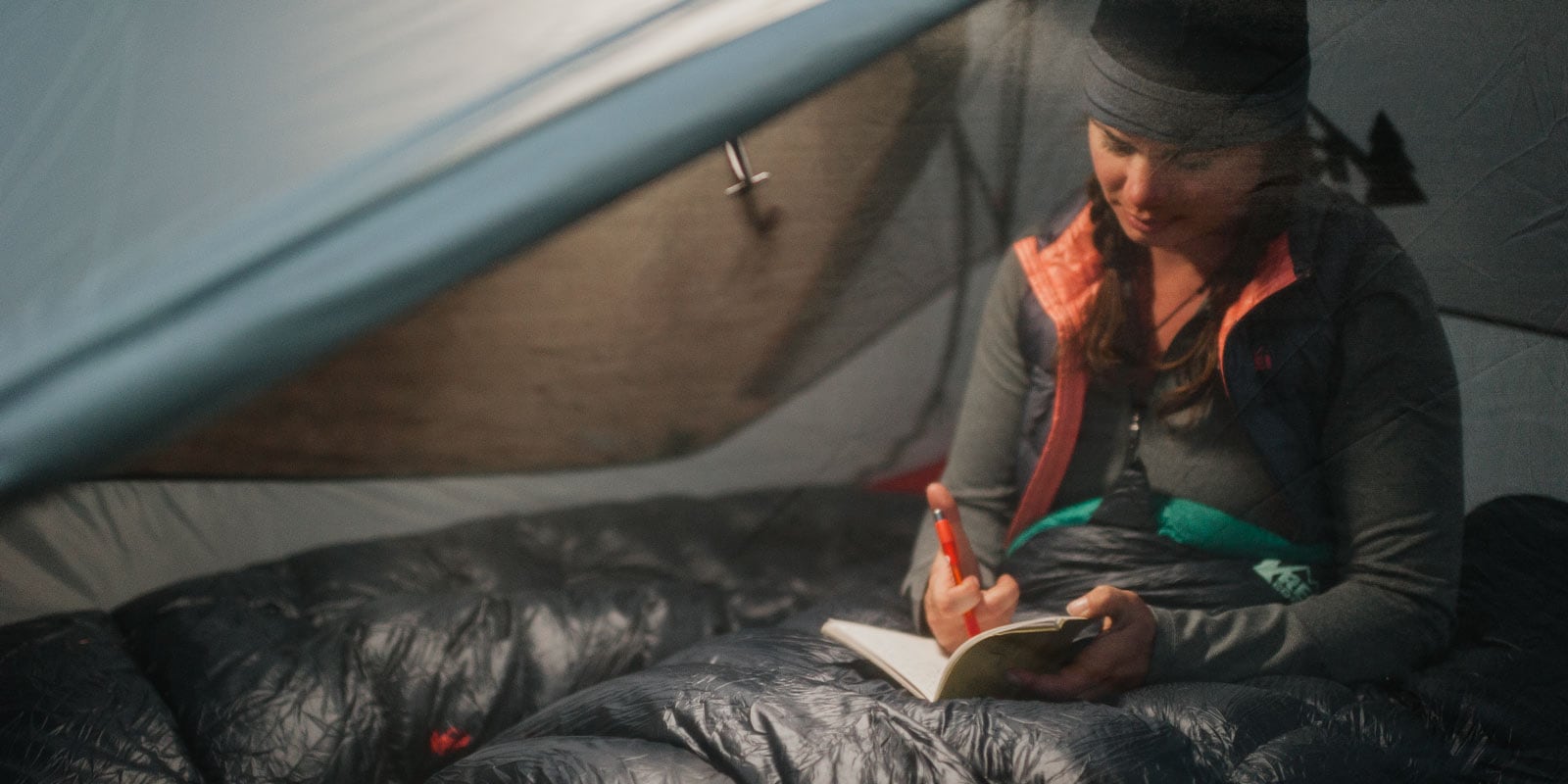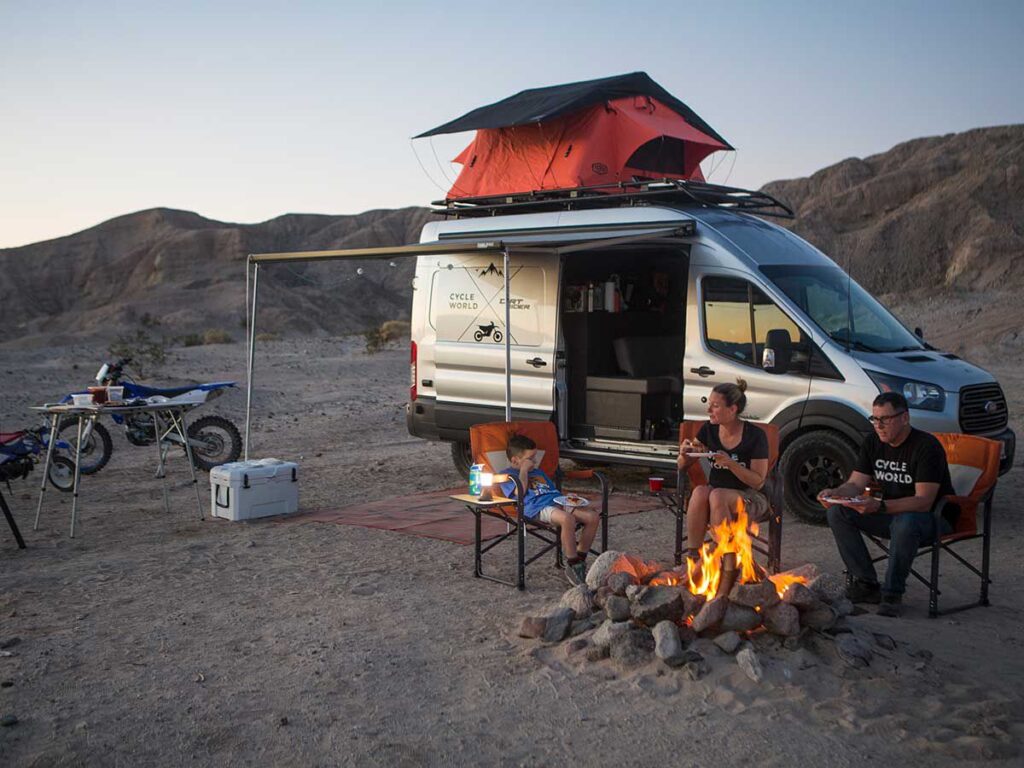The Ultimate Dirt Bike Camping Guide
The Ultimate Dirt Bike Camping Guide

While dirt bikers enjoy a wide range of sports and outdoor activities, dirt bike camping has recently gained popularity. Outdoor activities that combine dirt biking and camping offer a once-in-a-lifetime opportunity to experience the rush of two-wheeled propulsion and the beauty of the great outdoors while also learning important lessons about responsibility and independence. In this case, an ultimate dirt bike camping guide is all that you need.
You and your friends can stop at a beautiful out-of-the-way location you discovered while dirt biking, pitch a tent for the night, and continue on the next day. Staying overnight at a dirt biking location while riding is called “dirt camping.” You can camp near a popular trailhead, in a mountain resort, or even in the mountains. You and your friends can spend the night in a beautiful out-of-the-way location you discovered while dirt biking and then continue on the next day. Here we have summarised the Ultimate Dirt Bike Camping Guide to make your trip comfortable and enjoyable. So, stay till the end.
Camping essentials

Outdoor activities such as camping are pleasurable whether done with others or alone. State and national parks, private campgrounds, the wilderness, and even your backyard can all be good places to camp. This camping checklist will assist you in remembering everything you need to carry on your trip and avoid leaving anything at home. While we hope you bring some of the goods on our list, we will not be offended if you forget something. The following items are at the top of the Ultimate Dirt Bike Camping Guide camping essentials list, in no particular order:
- Tent (and footprint, stakes)
- Sleeping bag
- Sleeping pads
- Camping pillow
- Headlamps or flashlights (and extra batteries)
- Camp chairs
- Camp table (if no picnic table)
- Lantern (and mantles and fuel/batteries if needed)
- Durable Clothes and Shoes
- Food and Water
- Camping Stove and Fuel
- Pots, Pans, and Utensils
- Plates and Cups
What should campers know?
We’ve pooled resources, contacted experts, and reviewed our archives to present the most comprehensive camping guidance online. Anyone who has wanted to go camping but didn’t know how should read this.

1. Look at the weather report.
Even though the weather forecast isn’t always right, it will give you a good idea of what to plan for.
2. Plan your moves ahead of time.
Before you leave home, look at our list of things to do in the area where you’ll be camping. You can use these tips to plan your days on and off the campsite before you get there. There’s so much to do, from going to top places in the UK to enjoy the woods on these walking and biking paths.
3. There’s no problem with being too ready.
Sure, it’s helpful to pack light. But you won’t know what you need until you’ve camped a few times. Don’t listen to anyone who says you’ve brought too much stuff. You should be ready for anything until you can make your list of things to bring.
4. Keep trying for sales on camping
Sales at the end of the camping season are a great way to save money on camping gear and extras. Check these out during the off-season to see if you can get a good deal. Make sure to do your research before you invest in making sure you’re getting the best deal possible.
5. Keep a first-aid kit on hand.
If you know how to clean and bandage a wound, you might be able to save someone’s life. When you go camping, it’s a good idea to bring a separate first-aid kit for your dog.
What to do if you are lost?

Hikers might quickly lose their way in the forest or on the Sierra granite slabs, where routes regularly disappear, or off-trail adventures lead to difficult terrain. Being lost is scary, but you must be calm about keeping safe if you get lost while camping or trekking.
1. Look around
Relax first. Panic causes bad decisions. Any progress in the wrong direction makes the issue worse. Relax and unwind. Don’t be blind! Mountain rescue workers say staying lost diminishes survival chances. Also, follow a stream downstream. This causes deeper woods or inaccessible terrain. Refuse. Don’t. Once you’re calm, get your map. Observe! See a path? Trees? What? These clues can locate you. If unsure, analyze the situation. Weather? Need rainwear now? Supply? Benefits? How long will it take a trusted person to notice something is amiss if you tell them before camping? When did you say you’d return? These questions will tell you when and how to get help.
2. Stay Put
Pick a spot if you get lost while camping or trekking. If you leave, you may become lost in the wilderness. Staying Put will help rescuers find you. Search, and rescue teams follow different protocols and have diverse members. A ground search-and-rescue team will look for you if you’re lost in the woods. This team consists of officers and volunteers. If you hear sirens or see a flashlight beam, aid is undoubtedly coming.
3. Look For Signals
You want rescuers to know your position. Prepared backpackers or hikers have a whistle, torch, and map/compass. Use your tools, and blow the whistle in threes. Five hundred feet off the trail, several lost hikers are located. A flashlight helps rescuers see you at night. Three-time flash. In many Sierra wilderness locations, burning is the last resort.

How to treat injuries
In this Ultimate Dirt Bike Camping Guide, we will talk about treating injuries. Camping trips necessitate meticulous planning, considering the possibility of injury and the essential equipment. It’s aggravating to have minor wounds, but being prepared for treatment will help you manage. This section will go through the most common camping injuries and how to treat them.

1. Suffering from abrasions and cuts
Properly treating a cut or abrasion while camping is similar to doing so at home. Stop bleeding first. Then clean the wound. Never clean a wound with stream, lake, or river water. Water quality is irrelevant. Even if the water isn’t dirty, it may contain bacteria that can infect a wound.
2. Sprained ankles
Rest the ankle first. If you injure your ankle, hop quickly. To minimize swelling, apply ice. Depending on the season, you can use snow packs, ice from a container, beer, or a cool towel wrapped around the ankle. Compress the joint with an elastic band, but don’t do it too tightly, or circulation will be cut off. Elevate the ankle last. Lift your foot above your heart. After 15 minutes of RICE, let the ankle warm up. Continue hiking. RICE every two hours.
3. Bug bites
Bugs are bothersome. Carry bug spray and use it to keep mosquitoes and other bugs away. Anti-itch cream is a great way to keep mosquitoes away. Bring an EpiPen with you if you are allergic to bees or other bugs.
4. Snake bites
If you come across a snake, keep walking. Snakes are shy and will not waste their venom on non-food items. If you get bitten, remember this: Relax. Panicking is pointless. Snakes do not always spit venom. Never panic and become disoriented. Look for biting marks. You’ll be able to tell if the snake is poisonous. Help! Don’t try to flee. Antivenin should be administered within two hours of a bite. Non-alcoholic, caffeine-free beverages. Dehydration is caused by inflammation. DO NOT suck the poison out of the marks, apply cold, or use a tourniquet. Forget everything you’ve learned about snake bites. They’re pointless, according to our The Ultimate Dirt Bike Camping Guide.
Fixing a broken bike
The next solution in our Ultimate Dirt Bike Camping Guide is fixing a broken bike. Bikes are a fun, healthful, and sustainable way to commute or ride with friends. Your bike will run smoothly with regular maintenance and repairs. Our Ultimate Dirt Bike Camping Guide has several common bike fixes, from replacing a chain to changing handlebars.
 1. Repairing chain
1. Repairing chain
Pins hold outer and inner plates together in chains. Your bike’s chain shifts gears. Unbalanced chains make bikes unrideable. How to fix some common bike chain issues.
2. Slipped Chain repair
While pedaling, reposition the sliding chain. Slowly remove the derailleur and squeeze the pedal to shift the back wheel. Pedal until all chains are secured. Shift to the lowest gear and pedal before remounting. This should correct your chain. Changing gears without pedaling might cause the chain to become tangled.
3. Broken Chain repair
A small multi-tool is required to repair a bike chain. Turn your bike, so the wheels face up and rest on the saddle and handlebars. Choose which end of the chain to cut.
Conclusion
Dirt bike camping allows you to ride the trails whenever you choose, whether late at night or early in the morning. Keep reading if this sounds like something you’d like to check out on your next vacation. Typically, dirt camping includes spending the night at a dirt bike location. You can pitch your tent near a popular trailhead, a mountain resort, or even the mountains themselves.















